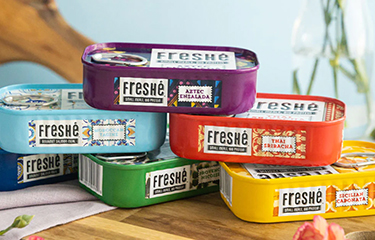Traditionally, retailers selling shelf-stable seafood products have limited their offerings to simple, unflavored cans of fish – primarily tuna – lacking the innovation that other food categories have been able to achieve.
Research on what seafood consumers value, such as the 2023 FMI Power of Seafood report, continues to indicate U.S. seafood shoppers prioritize quality, price, sustainability, convenience, and health, but increasingly are searching for ingenuity as well.
According to the FMI report, sustainability in seafood products is important to 66 percent of seafood shoppers, and 69 percent claim nutrition and health as primary or important reasons to eat seafood. More U.S. consumers lack time to cook meals from scratch, making ready-to-eat options increasingly important for them.
By emphasizing sustainability and nutrition, seafood companies have started to take the steps needed to meet these consumer needs, and by updating their shelf-stable offerings with ready-to-eat meals that feature an intriguing array of flavored ingredients, they’ll find even more success, according to Henry Lovejoy, the president of EcoFish, a company that produces Henry and Lisa’s Natural Seafood and Freshé brands of shelf-stable seafood items.
“A lot of food categories have kept up with consumers’ tastes, except for canned fish,” Lovejoy said. “Until we launched Freshé Meals in 2018, it was still just canned fish. Even with high-quality canned fish – if you could find it – you still had to go to other parts of the store to make a meal with it, even if it was just a sandwich [you wanted].”
EcoFish, headquartered in Dover, New Hampshire, U.S.A, employs the European tradition of preserving seafood in tins, a process that avoids the use of preservatives and keeps seafood fresh for years, for its Freshé brand. The company has begun to use this process to create ready-to-eat tinned meals that use fish as a base, along with complementary ingredients such as vegetables, legumes, herbs, spices, and olive oil.
“That niche in the market was just sitting there for ready-to-eat, convenient, healthy seafood meals,” Lovejoy said. “There’s a reason why the majority of seafood is sold in restaurants; Consumers in the U.S. are largely uncomfortable preparing seafood at home.”
Freshé meals are tinned in …
Photo courtesy of EcoFish








